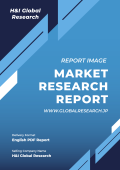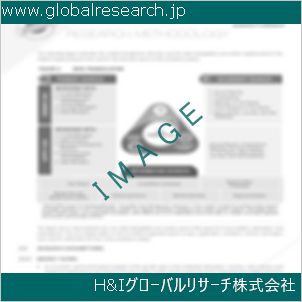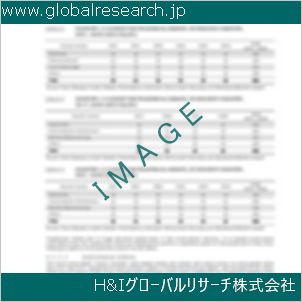1 Report Overview
1.1 Study Scope
1.2 Market Analysis by Type
1.2.1 Global Ataxia-telangiectasia (AT) Treatment Market Size Growth Rate by Type: 2018 VS 2022 VS 2029
1.2.2 Oral tablets
1.2.3 Injections
1.3 Market by Application
1.3.1 Global Ataxia-telangiectasia (AT) Treatment Market Growth by Application: 2018 VS 2022 VS 2029
1.3.2 Hospital
1.3.3 Pharmacy
1.3.4 Others
1.4 Study Objectives
1.5 Years Considered
1.6 Years Considered
2 Global Growth Trends
2.1 Global Ataxia-telangiectasia (AT) Treatment Market Perspective (2018-2029)
2.2 Ataxia-telangiectasia (AT) Treatment Growth Trends by Region
2.2.1 Global Ataxia-telangiectasia (AT) Treatment Market Size by Region: 2018 VS 2022 VS 2029
2.2.2 Ataxia-telangiectasia (AT) Treatment Historic Market Size by Region (2018-2023)
2.2.3 Ataxia-telangiectasia (AT) Treatment Forecasted Market Size by Region (2024-2029)
2.3 Ataxia-telangiectasia (AT) Treatment Market Dynamics
2.3.1 Ataxia-telangiectasia (AT) Treatment Industry Trends
2.3.2 Ataxia-telangiectasia (AT) Treatment Market Drivers
2.3.3 Ataxia-telangiectasia (AT) Treatment Market Challenges
2.3.4 Ataxia-telangiectasia (AT) Treatment Market Restraints
3 Competition Landscape by Key Players
3.1 Global Top Ataxia-telangiectasia (AT) Treatment Players by Revenue
3.1.1 Global Top Ataxia-telangiectasia (AT) Treatment Players by Revenue (2018-2023)
3.1.2 Global Ataxia-telangiectasia (AT) Treatment Revenue Market Share by Players (2018-2023)
3.2 Global Ataxia-telangiectasia (AT) Treatment Market Share by Company Type (Tier 1, Tier 2, and Tier 3)
3.3 Players Covered: Ranking by Ataxia-telangiectasia (AT) Treatment Revenue
3.4 Global Ataxia-telangiectasia (AT) Treatment Market Concentration Ratio
3.4.1 Global Ataxia-telangiectasia (AT) Treatment Market Concentration Ratio (CR5 and HHI)
3.4.2 Global Top 10 and Top 5 Companies by Ataxia-telangiectasia (AT) Treatment Revenue in 2022
3.5 Ataxia-telangiectasia (AT) Treatment Key Players Head office and Area Served
3.6 Key Players Ataxia-telangiectasia (AT) Treatment Product Solution and Service
3.7 Date of Enter into Ataxia-telangiectasia (AT) Treatment Market
3.8 Mergers & Acquisitions, Expansion Plans
4 Ataxia-telangiectasia (AT) Treatment Breakdown Data by Type
4.1 Global Ataxia-telangiectasia (AT) Treatment Historic Market Size by Type (2018-2023)
4.2 Global Ataxia-telangiectasia (AT) Treatment Forecasted Market Size by Type (2024-2029)
5 Ataxia-telangiectasia (AT) Treatment Breakdown Data by Application
5.1 Global Ataxia-telangiectasia (AT) Treatment Historic Market Size by Application (2018-2023)
5.2 Global Ataxia-telangiectasia (AT) Treatment Forecasted Market Size by Application (2024-2029)
6 North America
6.1 North America Ataxia-telangiectasia (AT) Treatment Market Size (2018-2029)
6.2 North America Ataxia-telangiectasia (AT) Treatment Market Growth Rate by Country: 2018 VS 2022 VS 2029
6.3 North America Ataxia-telangiectasia (AT) Treatment Market Size by Country (2018-2023)
6.4 North America Ataxia-telangiectasia (AT) Treatment Market Size by Country (2024-2029)
6.5 United States
6.6 Canada
7 Europe
7.1 Europe Ataxia-telangiectasia (AT) Treatment Market Size (2018-2029)
7.2 Europe Ataxia-telangiectasia (AT) Treatment Market Growth Rate by Country: 2018 VS 2022 VS 2029
7.3 Europe Ataxia-telangiectasia (AT) Treatment Market Size by Country (2018-2023)
7.4 Europe Ataxia-telangiectasia (AT) Treatment Market Size by Country (2024-2029)
7.5 Germany
7.6 France
7.7 U.K.
7.8 Italy
7.9 Russia
7.10 Nordic Countries
8 Asia-Pacific
8.1 Asia-Pacific Ataxia-telangiectasia (AT) Treatment Market Size (2018-2029)
8.2 Asia-Pacific Ataxia-telangiectasia (AT) Treatment Market Growth Rate by Region: 2018 VS 2022 VS 2029
8.3 Asia-Pacific Ataxia-telangiectasia (AT) Treatment Market Size by Region (2018-2023)
8.4 Asia-Pacific Ataxia-telangiectasia (AT) Treatment Market Size by Region (2024-2029)
8.5 China
8.6 Japan
8.7 South Korea
8.8 Southeast Asia
8.9 India
8.10 Australia
9 Latin America
9.1 Latin America Ataxia-telangiectasia (AT) Treatment Market Size (2018-2029)
9.2 Latin America Ataxia-telangiectasia (AT) Treatment Market Growth Rate by Country: 2018 VS 2022 VS 2029
9.3 Latin America Ataxia-telangiectasia (AT) Treatment Market Size by Country (2018-2023)
9.4 Latin America Ataxia-telangiectasia (AT) Treatment Market Size by Country (2024-2029)
9.5 Mexico
9.6 Brazil
10 Middle East & Africa
10.1 Middle East & Africa Ataxia-telangiectasia (AT) Treatment Market Size (2018-2029)
10.2 Middle East & Africa Ataxia-telangiectasia (AT) Treatment Market Growth Rate by Country: 2018 VS 2022 VS 2029
10.3 Middle East & Africa Ataxia-telangiectasia (AT) Treatment Market Size by Country (2018-2023)
10.4 Middle East & Africa Ataxia-telangiectasia (AT) Treatment Market Size by Country (2024-2029)
10.5 Turkey
10.6 Saudi Arabia
10.7 UAE
11 Key Players Profiles
11.1 Sanofi
11.1.1 Sanofi Company Detail
11.1.2 Sanofi Business Overview
11.1.3 Sanofi Ataxia-telangiectasia (AT) Treatment Introduction
11.1.4 Sanofi Revenue in Ataxia-telangiectasia (AT) Treatment Business (2018-2023)
11.1.5 Sanofi Recent Development
11.2 Intrabio Ltd
11.2.1 Intrabio Ltd Company Detail
11.2.2 Intrabio Ltd Business Overview
11.2.3 Intrabio Ltd Ataxia-telangiectasia (AT) Treatment Introduction
11.2.4 Intrabio Ltd Revenue in Ataxia-telangiectasia (AT) Treatment Business (2018-2023)
11.2.5 Intrabio Ltd Recent Development
11.3 Intas Pharmaceuticals Ltd
11.3.1 Intas Pharmaceuticals Ltd Company Detail
11.3.2 Intas Pharmaceuticals Ltd Business Overview
11.3.3 Intas Pharmaceuticals Ltd Ataxia-telangiectasia (AT) Treatment Introduction
11.3.4 Intas Pharmaceuticals Ltd Revenue in Ataxia-telangiectasia (AT) Treatment Business (2018-2023)
11.3.5 Intas Pharmaceuticals Ltd Recent Development
11.4 Sun Pharmaceutical Industries Ltd
11.4.1 Sun Pharmaceutical Industries Ltd Company Detail
11.4.2 Sun Pharmaceutical Industries Ltd Business Overview
11.4.3 Sun Pharmaceutical Industries Ltd Ataxia-telangiectasia (AT) Treatment Introduction
11.4.4 Sun Pharmaceutical Industries Ltd Revenue in Ataxia-telangiectasia (AT) Treatment Business (2018-2023)
11.4.5 Sun Pharmaceutical Industries Ltd Recent Development
11.5 Cipla Inc
11.5.1 Cipla Inc Company Detail
11.5.2 Cipla Inc Business Overview
11.5.3 Cipla Inc Ataxia-telangiectasia (AT) Treatment Introduction
11.5.4 Cipla Inc Revenue in Ataxia-telangiectasia (AT) Treatment Business (2018-2023)
11.5.5 Cipla Inc Recent Development
11.6 Eli Lilly and Company
11.6.1 Eli Lilly and Company Company Detail
11.6.2 Eli Lilly and Company Business Overview
11.6.3 Eli Lilly and Company Ataxia-telangiectasia (AT) Treatment Introduction
11.6.4 Eli Lilly and Company Revenue in Ataxia-telangiectasia (AT) Treatment Business (2018-2023)
11.6.5 Eli Lilly and Company Recent Development
11.7 Saol Therapeutics Inc
11.7.1 Saol Therapeutics Inc Company Detail
11.7.2 Saol Therapeutics Inc Business Overview
11.7.3 Saol Therapeutics Inc Ataxia-telangiectasia (AT) Treatment Introduction
11.7.4 Saol Therapeutics Inc Revenue in Ataxia-telangiectasia (AT) Treatment Business (2018-2023)
11.7.5 Saol Therapeutics Inc Recent Development
11.8 USV Private Limited
11.8.1 USV Private Limited Company Detail
11.8.2 USV Private Limited Business Overview
11.8.3 USV Private Limited Ataxia-telangiectasia (AT) Treatment Introduction
11.8.4 USV Private Limited Revenue in Ataxia-telangiectasia (AT) Treatment Business (2018-2023)
11.8.5 USV Private Limited Recent Development
12 Analyst’s Viewpoints/Conclusions
13 Appendix
13.1 Research Methodology
13.1.1 Methodology/Research Approach
13.1.2 Data Source
13.2 Disclaimer
13.3 Author Details
| ※参考情報 毛細血管拡張性運動失調症(AT)は、遺伝性の神経変性疾患であり、この疾患の主な特徴には運動失調、免疫不全、そして毛細血管拡張が含まれます。ATは常染色体劣性遺伝によって引き継がれ、ATM遺伝子の変異によって引き起こされます。このATM遺伝子は、DNA損傷の修復に関与する重要な役割を果たしています。そのため、AT患者はDNA修復に関わる能力が低下しており、これが様々な病的状態を引き起こす原因となります。 ATの特徴の一つは、運動失調です。これは、筋肉の協調運動が障害され、歩行やバランスを保つのが難しくなる状態を指します。多くの場合、初期の症状は幼少期に現れ、運動能力の発達が遅れることがあります。また、患者の中には、発話の問題や眼球運動の異常が見られることもあります。 次に、免疫不全についてですが、AT患者は感染症にかかりやすい傾向があります。これは、免疫系に重要な役割を果たすT細胞やB細胞の機能が低下しているためです。この免疫の不全は、特に小児期において生命を脅かす感染症のリスクを高める要因となります。したがって、ATに伴う免疫関連の合併症は、治療において特に注意が必要です。 さらに、毛細血管拡張はATのもう一つの重要な特徴です。これにより、特に目や皮膚に赤い血管が広がる状態が観察されます。これらの血管拡張は、しばしば心血管系の問題や癌のリスクと関連しています。そのため、ATの患者は早期に定期的な健康診断を受けることが推奨されます。 ATの治療法は多岐にわたりますが、現在のところ根本的な治療法は確立されていません。そのため支持療法が中心となります。運動リハビリテーションや理学療法は、運動機能の改善や維持に重要です。これにより、日常生活における自立性を高めることが期待されます。また、職業療法も、患者が社会で生活する上で必要なスキルを向上させる手助けをするために重要です。 免疫不全に対するアプローチも重要で、感染症の予防や管理が治療の一環となります。例えば、定期的なワクチン接種や感染予防策の実施が推奨されます。また、場合によっては抗生物質の使用が考慮されます。 ATの患者においては、がんのリスクが増加するため、定期的な健康診断が必須です。特にリンパ腫や白血病のリスクが高まることから、早期発見が重要な要素となります。定期的な血液検査や画像診断によって、異常を早期に発見することが目指されます。 最近の研究では、ATに対する遺伝子療法や細胞療法の可能性も示唆されています。一部の研究は、ATM遺伝子の機能を修復する試みをしていますが、これらの研究はまだ初期段階にあり、臨床応用には時間がかかるでしょう。さらに、きわめて先進的な技術として、CRISPRなどの遺伝子編集技術が注目されています。これにより、ATM遺伝子の変異を直接修正することが理論的には可能になるかもしれませんが、安全性や倫理的な問題も考慮する必要があります。 ATの治療に関連する技術は、通常は長期的な観察と多角的なアプローチを必要とします。医療チームは、神経科医、免疫専門医、リハビリテーション専門家、栄養士など、複数の専門分野の医師で構成されることが必要です。これにより、患者のニーズに対して総合的に対応することができます。 今後、ATの患者に対する理解が深まり、新たな治療法や支援の方法が導入されることで、患者の生活の質が向上することが期待されています。根本的な治療法の確立や、新しい技術の臨床応用が進むことで、毛細血管拡張性運動失調症の治療においてより良い未来が開かれることを願っています。 |
❖ 免責事項 ❖
http://www.globalresearch.jp/disclaimer












